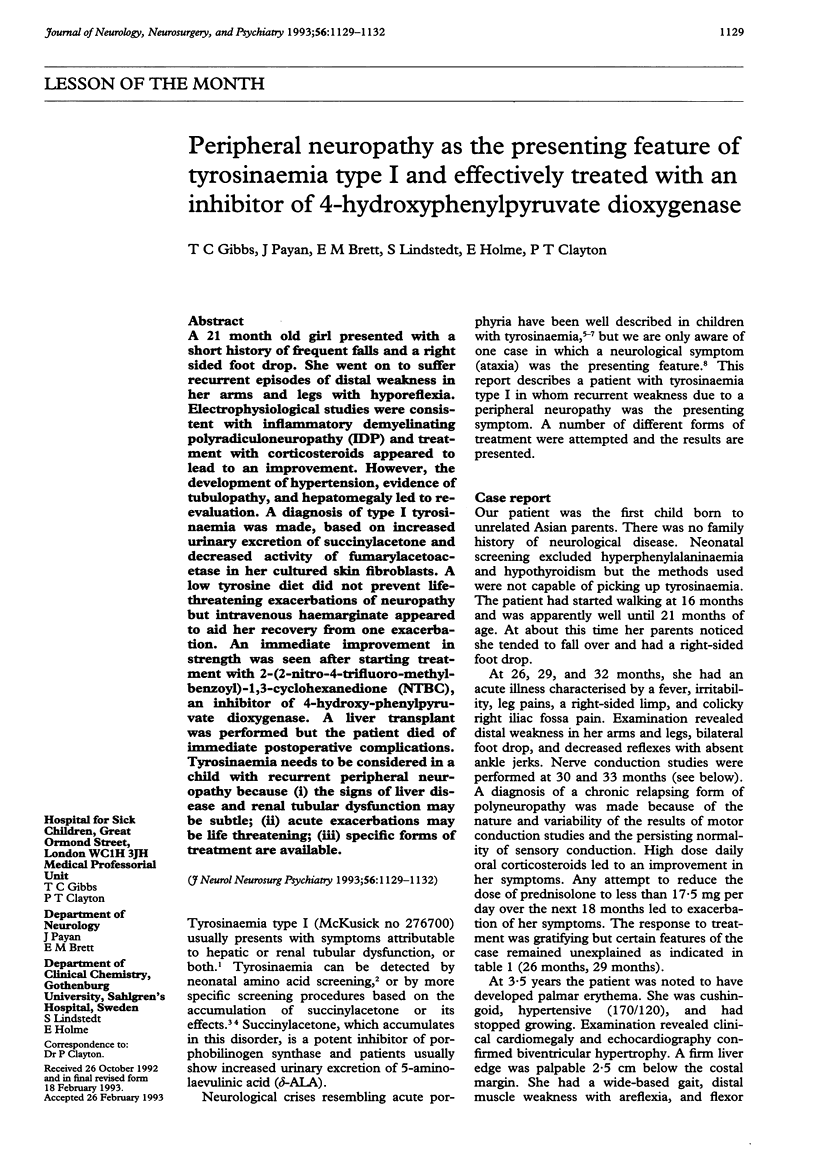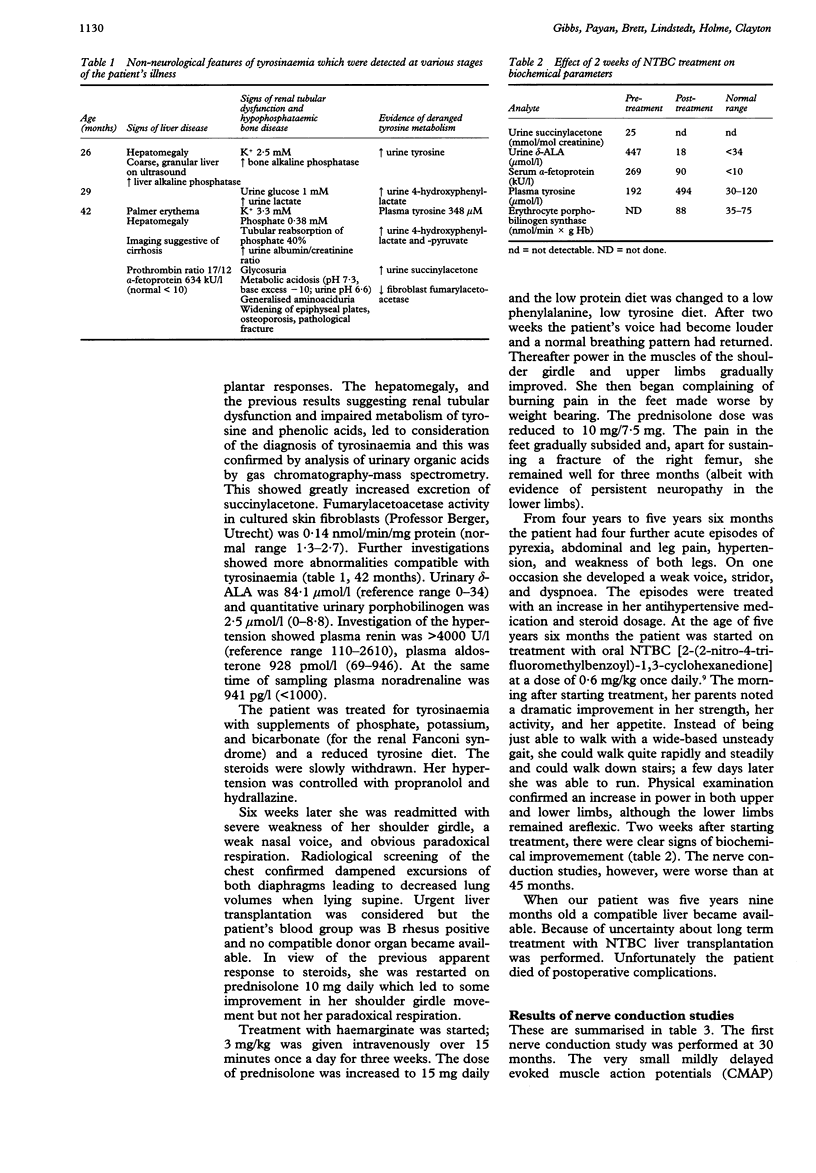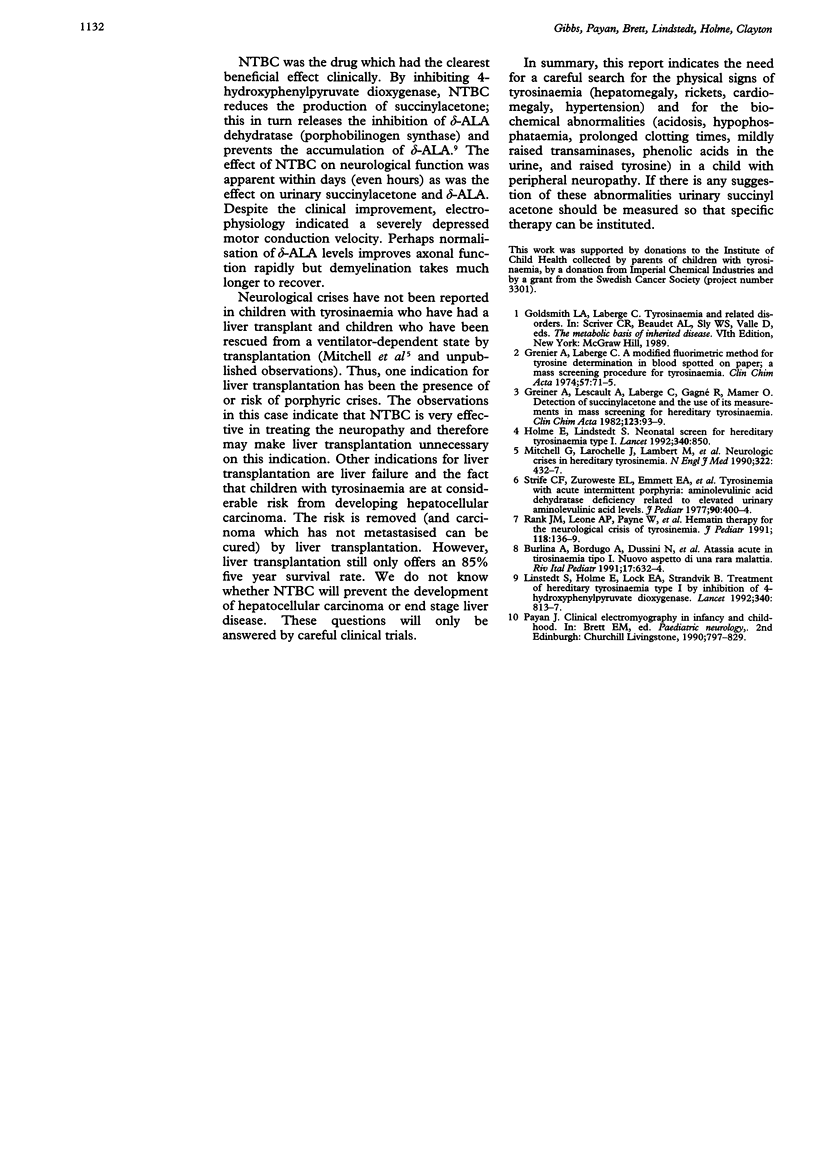Abstract
A 21 month old girl presented with a short history of frequent falls and a right sided foot drop. She went on to suffer recurrent episodes of distal weakness in her arms and legs with hyporeflexia. Electrophysiological studies were consistent with inflammatory demyelinating polyradiculoneuropathy (IDP) and treatment with corticosteroids appeared to lead to an improvement. However, the development of hypertension, evidence of tubulopathy, and hepatomegaly led to re-evaluation. A diagnosis of type I tyrosinaemia was made, based on increased urinary excretion of succinylacetone and decreased activity of fumarylacetoacetase in her cultured skin fibroblasts. A low tyrosine diet did not prevent life-threatening exacerbations of neuropathy but intravenous haemarginate appeared to aid her recovery from one exacerbation. An immediate improvement in strength was seen after starting treatment with 2-(2-nitro-4-trifluoro-methyl-benzoyl)-1,3-cyclohexanedione (NTBC), an inhibitor of 4-hydroxy-phenylpyruvate dioxygenase. A liver transplant was performed but the patient died of immediate postoperative complications. Tyrosinaemia needs to be considered in a child with recurrent peripheral neuropathy because (i) the signs of liver disease and renal tubular dysfunction may be subtle; (ii) acute exacerbations may be life threatening; (iii) specific forms of treatment are available.
Full text
PDF



Selected References
These references are in PubMed. This may not be the complete list of references from this article.
- Grenier A., Laberge C. A modified automated fluorometric method for tyrosine determination in blood spotted on paper: a mass screening procedure for tyrosinemia. Clin Chim Acta. 1974 Nov 20;57(1):71–75. doi: 10.1016/0009-8981(74)90179-x. [DOI] [PubMed] [Google Scholar]
- Grenier A., Lescault A., Laberge C., Gagné R., Mamer O. Detection of succinylacetone and the use of its measurement in mass screening for hereditary tyrosinemia. Clin Chim Acta. 1982 Aug 4;123(1-2):93–99. doi: 10.1016/0009-8981(82)90117-6. [DOI] [PubMed] [Google Scholar]
- Holme E., Lindstedt S. Neonatal screen for hereditary tyrosinaemia type I. Lancet. 1992 Oct 3;340(8823):850–850. doi: 10.1016/0140-6736(92)92724-t. [DOI] [PubMed] [Google Scholar]
- Lindstedt S., Holme E., Lock E. A., Hjalmarson O., Strandvik B. Treatment of hereditary tyrosinaemia type I by inhibition of 4-hydroxyphenylpyruvate dioxygenase. Lancet. 1992 Oct 3;340(8823):813–817. doi: 10.1016/0140-6736(92)92685-9. [DOI] [PubMed] [Google Scholar]
- Rank J. M., Pascual-Leone A., Payne W., Glock M., Freese D., Sharp H., Bloomer J. R. Hematin therapy for the neurologic crisis of tyrosinemia. J Pediatr. 1991 Jan;118(1):136–139. doi: 10.1016/s0022-3476(05)81867-0. [DOI] [PubMed] [Google Scholar]
- Strife C. F., Zuroweste E. L., Emmett E. A., Finelli V. N., Petering H. G., Berry H. K. Tyrosinemia with acute intermittent porphyria: aminolevulinic acid dehydratase deficiency related to elevated urinary aminolevulinic acid levels. J Pediatr. 1977 Mar;90(3):400–404. doi: 10.1016/s0022-3476(77)80701-4. [DOI] [PubMed] [Google Scholar]


